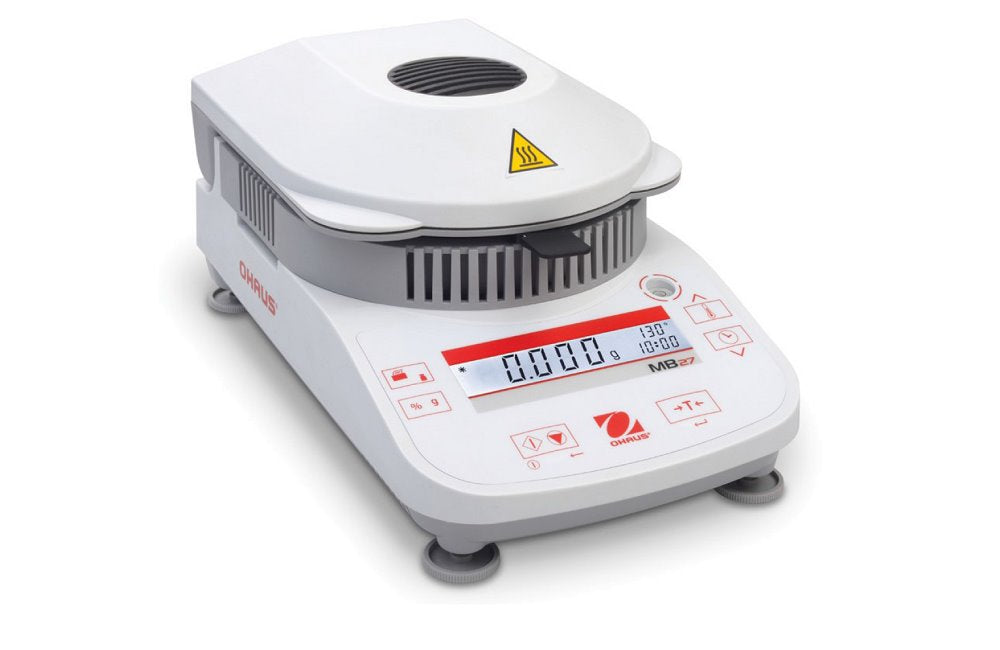Petri dishes are shallow, lidded dishes used in labs to grow and study microorganisms. Invented by Julius Richard Petri, they are essential in scientific research and medical diagnostics. This article explains what are Petri dishes, their history, uses, and types.
Key Takeaways
-
Petri dishes, invented by Julius Richard Petri in 1887, are crucial lab tools designed for growing microorganisms in a controlled, contamination-free environment.
-
These dishes excel in multiple applications, including cultivating bacterial cultures, observing cell cultures, and conducting environmental testing, making them indispensable in various scientific fields.
-
Quality and proper maintenance of Petri dishes are vital to ensure experimental integrity and accurate results, as poor-quality dishes can lead to contamination and unreliable data.
Petri Dish Defined

A Petri dish is a shallow round glass container used primarily for growing microorganisms. These small dishes are designed with a transparent lid that fits loosely, allowing air exchange while preventing contamination. Typically made from borosilicate glass, these dishes offer thermal resistance, making them ideal for various laboratory applications. The design of the Petri dish ensures that scientists can easily observe the growth and development of cultures without disturbing the environment.
The Petri plate, named after its inventor Julius Richard Petri, is a staple in laboratories worldwide. Reusable glass Petri dishes are common, providing a sustainable option for repeated experiments. Their durability and reusability make them a cost-effective and reliable choice for scientists working on long-term projects, as petri explained.
From growing bacteria to observing cell cultures, Petri dishes are indispensable tools in the scientific lab experiment community, particularly for growing cells and studying life, including the behavior of a bacterium and bacteria growth.
Key Uses of Petri Dishes in Laboratories

Petri dishes are fundamental to laboratory work, offering a controlled environment for various experiments and observations. Their primary uses include growing bacterial cultures, studying mammalian cell cultures, and conducting environmental testing. These applications make Petri dishes indispensable in many scientific fields, from microbiology to environmental science.
Let’s delve deeper into each of these key uses.
Growing Bacteria Cultures
One of the primary uses of Petri dishes is for growing cultures of microorganisms. Researchers use these dishes to study the growth and reactions of bacteria under controlled conditions. Samples in Petri dishes are usually incubated at around 37 degrees Celsius to support optimal bacterial growth. This controlled environment enables scientists to observe various stages of development and reactions.
Petri dishes are designed for direct inoculation, minimizing contamination risks. Covers the dish with a lid after inoculation protects the sample, ensuring airborne germs do not interfere. This process is fundamental in microbiology, aiding researchers in studying microorganisms effectively.
Studying Cell Cultures
Petri dishes are also essential for observing the growth and behavior of mammalian cell cultures. These dishes provide a controlled environment where researchers can study the interactions and development of cells. The ability to observe cell cultures in real-time is crucial for experiments in cell biology and medical research, allowing for precise monitoring and analysis.
Using Petri dishes ensures that cell cultures remain uncontaminated and stable. This controlled environment is crucial for studying cellular responses, understanding disease mechanisms, and developing new treatments.
The role of Petri dishes in cell culture studies underscores their importance in advancing biomedical research.
Environmental Testing
Petri dishes are employed to analyze environmental samples, enabling the detection of microorganisms and contaminants in pond water and soil. These dishes are used to identify contaminants, ensuring that environmental testing can accurately assess the presence of harmful organisms. This application is vital for monitoring water quality and environmental health, detecting potential threats to public safety.
In laboratories, Petri dishes cultivate microorganisms from environmental samples, allowing scientists to study various contaminants. This process is essential for environmental research, offering valuable data on pollution levels and pathogens. Petri dishes thus play a vital role in protecting our environment and ensuring public health.
Types of Petri Dishes

Petri dishes come in various types, primarily made from glass or plastic materials. Glass Petri dishes are reusable and resistant to thermal shock, making them ideal for experiments requiring high temperatures and sterilization.
Plastic Petri dishes, on the other hand, are typically disposable and cost-effective, suitable for single-use applications. Let’s explore the characteristics and benefits of each type in more detail.
Glass Petri Dishes
Made from borosilicate glass, known for its durability and chemical resistance, glass Petri dishes exhibit high resistance to thermal shock. Their robust construction makes them reusable and a sustainable choice for laboratory settings.
These dishes are ideal for processes that require sterilized conditions, such as microbiological culture work. Their ability to remain uncontaminated through repeated uses makes them well-suited and indispensable in long-term research projects.
Glass Petri dishes, featuring a slightly larger glass lid, offer a reliable and durable option for scientific experiments in labs, especially when using laboratory glassware.
Plastic Petri Dishes
Typically made from polystyrene for its economical and practical properties, plastic Petri dishes can also be made from polycarbonate, known for its strength and clarity. They are often used for disposable applications to prevent cross-contamination.
These dishes typically feature a tight-fitting lid to reduce the risk of contamination during use. Reusable plastic Petri dishes can carry withstand repeated sterilization, though they must be managed properly to avoid melting at high temperatures and to maintain their shape.
The versatility and practicality of plastic Petri dishes make them a popular choice in many laboratories.
Effective Usage Techniques
Ensuring accurate results and preventing contamination when using Petri dishes involves proper usage techniques. These include sterilization methods, preparing agar medium, and the inoculation process, all crucial for maintaining experimental integrity and ensuring reliable outcomes.
Sterilization Methods
Autoclaving is the most effective way to sterilize Petri dishes, combining high heat, moisture, and pressure to eliminate contaminants. Glass Petri dishes can endure high temperatures, making them suitable for this process, ensuring they remain uncontaminated for sensitive experiments.
Alternatively, bleach can be used to disinfect Petri dishes before experiments to eliminate any residual contaminants. Maintaining a sterile environment is vital for accurate experimental results, making proper sterilization methods essential in laboratories.
Preparing Agar Medium
Preparing agar medium involves using ingredients like salt, nutrients, blood, antibiotics, and indicators to support microorganism growth. Nutrient agar is commonly used in Petri dishes to create a suitable environment for bacterial growth.
The agar medium should be boiled until fully dissolved to ensure even nutrient distribution. This step is critical for preparing a uniform surface for microorganisms, allowing for consistent and reliable results in microbiological studies.
Inoculation Process
Inoculation is crucial for growing microbial cultures in Petri dishes. Techniques like streak plating or poured samples apply without excessive pressure, ensuring even distribution and minimizing contamination risks using Koch’s plate method, including the plating technique.
Minimizing air exposure during inoculation prevents sample contamination. Securing the lid on the Petri dish after inoculation maintains a sterile environment, protecting cultures during their growth period.
Importance of Quality Petri Dishes

The invention of the Petri dish significantly advanced microbiology by enabling researchers to identify disease-causing bacteria effectively. To ensure accurate results, it is essential to use high-quality Petri dishes that minimize contamination and provide reliable environments for microbial growth.
Good quality Petri dishes reduce risks like drying out and contamination during research. Using top-quality dishes is crucial for maintaining experimental integrity and ensuring accurate, reliable data.
Petri dishes are critical for testing microorganism growth and reactions under various conditions, making high quality essential for their effectiveness. The importance of quality in Petri dishes cannot be overstated, as it directly impacts the success and reliability of scientific research.
Common Applications Beyond Microbiology
Petri dishes facilitate the detection of infections by allowing the analysis of samples such as blood and urine. Medical diagnostics often involve the use of Petri dishes for cultures that help identify infections and assess antibiotic susceptibility.
In botany, Petri dishes are used for seeds germination experiments, allowing controlled observation of plant development. These versatile tools are applied across fields like microbiology, medical diagnostics, and botany, demonstrating their wide-ranging applications.
Care and Maintenance
Working in a clean and sterile environment reduces contamination risks when using Petri dishes. Properly sealing them after use protects from contaminants, ensuring effectiveness for subsequent experiments.
Storing prepared agar plates upside down in refrigeration prevents condensation from interfering with the agar surface. Additionally, storing Petri dishes in a cool, dry place, ideally in a refrigerator, maintains their integrity.
Regular inspection of stored Petri dishes for damage and discarding any that are cracked or chipped tested prevents potential issues during experiments and can help avoid a break in the process.
Summary
Throughout this exploration of Petri dishes, we have delved into their definition, historical background, key uses, types, and effective usage techniques. From growing bacterial cultures to environmental testing, Petri dishes are indispensable tools in scientific research. Their importance cannot be overstated, as they play a vital role in advancing our understanding of microorganisms and their behaviors.
In conclusion, the humble Petri dish is a cornerstone of laboratory work, enabling countless discoveries and innovations. By ensuring the use of high-quality dishes and following proper care and maintenance practices, scientists can continue to rely on these essential tools for accurate and reliable results. The next time you see a Petri dish, remember the profound impact it has on science and our understanding of the world around us.
Frequently Asked Questions
What is a Petri dish used for?
A Petri dish is used primarily for cultivating microorganisms, conducting cell culture studies, and performing environmental tests. Its design facilitates observation and research in various biological applications.
Who invented the Petri Dish?
The Petri dish was invented in 1887 by Julius Richard Petri during his work as an assistant to Robert Koch. This innovation has greatly advanced the field of microbiology.
What are the types of Petri dishes?
Petri dishes are categorized primarily into glass and plastic types. Glass dishes are reusable, while plastic dishes are generally designed for single-use applications.
How do you sterilize a Petri dish?
To effectively sterilize a Petri dish, employ an autoclave that utilizes high heat, moisture, and pressure. Alternatively, disinfecting with bleach is also an option.
Why is the quality of Petri dishes important?
The quality of Petri dishes is crucial as it minimizes contamination and ensures accurate experimental results, which are vital for reliable scientific research. Using high-quality materials guarantees the integrity of your findings.





